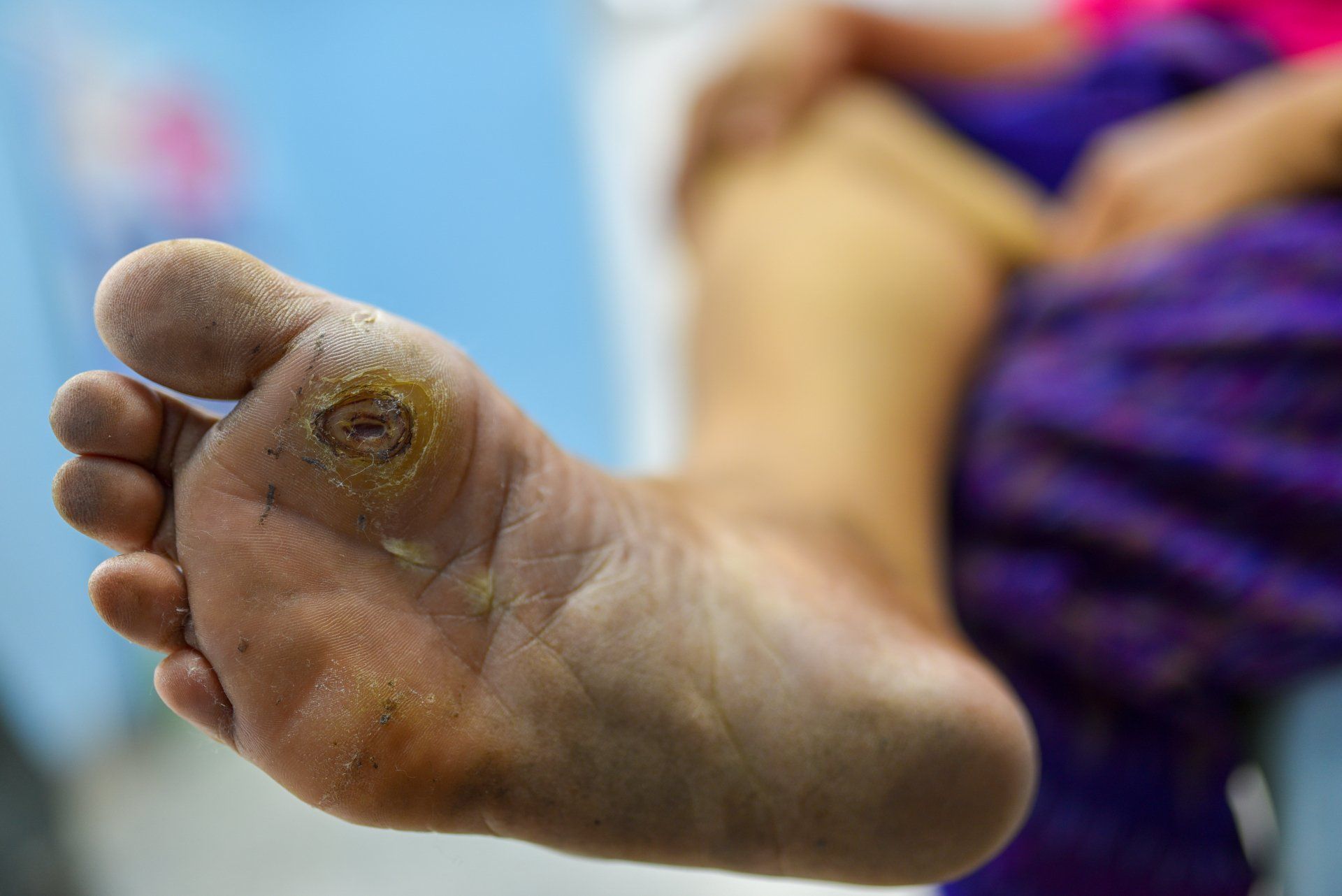Diabetic Foot Ulcers

Diabetic Foot Ulcers are the most common cause of sores/ulcers on the feet or toes of patients who have diabetes mellitus. It is also one of the common causes of bone infection of the toes/foot. It can lead to amputation of toes, foot, and possibly even the leg. These ulcers are caused by chronic pressure, because diabetics don't have normal sensation in the toes and feet(peripheral neuropathy). This is similar to a paraplegic who can develop pressure sores because they cannot feel pain. Most often a diabetic foot ulcer occurs on the bottom of the foot or toes. They can also occur in areas where poor fitting shoes exert long term pressure.
Some Scary Statistics
Diabetes is the leading cause of amputations in the United States.
Around 1 in 5 (20%) patients with diabetes mellitus will develop a diabetic foot ulcer during their lifetime.
About 1 in 20 (5%) patients with diabetes mellitus will develop foot ulcer and 1% end up with an amputation.
Symptoms of an impending Diabetic Foot Ulcer
Numbness in the toes or foot (peripheral neuropathy).
Often, a callus (hard skin/corn) on the bottom of the toe or foot may be the first sign of an impending ulcer. There may already be an ulcer underneath the callus.
Usually, a painless soreon the foot or toes. If there is pain, redness, drainage, or warmth, this may indicate infection, which is an emergency.
The ulcer is usually shallow, over pressure areas or between toes that are abnormally rubbing together.
Risk factors for Diabetic Foot Ulcer
Long standing or poorly controlled diabetes.
Pressure on the bottom of the foot/toes, or between toes.
Poorly fitting shoes that rub on the foot/toes.
Numbness (peripheral neuropathy) in the foot/toes from long standing diabetes.
Poor arterial circulation in the legs and feet (Peripheral Arterial Disease/PAD).
Diagnosisis of Diabetic Foot Ulcer
Good physical exam including looking at the bottom of the foot and between the toes.
Sensation will be diminished to light touch.
If there is redness, warmth, or drainage, there may be infection.
A diabetic should see a podiatrist twice a year for a good foot exam to prevent ulcers.
X-ray of the foot to look for bony infection, fracture, and gas in the tissues, which would be an emergency (gas gangrene).
MRI might be ordered if bone infection is suspected.
Arterial tests may be ordered if peripheral artery disease (PAD) is suspected. This may include ankle-brachial index (ABI) and/or arterial ultrasound/duplex.
Treatment of Diabetic Foot Ulcers
Prevent ongoing pressure to the area with special shoes or not walking on the foot (using crutches, a scooter, or even a wheelchair).
Aggressive control of blood sugars by adjusting diet as well as diabetic medications.
Stop smoking cigarettes if you smoke.
Antibiotics if infection is present.
Seeing a vascular surgeon who can increase arterial flow to the foot if peripheral arterial disease exists on testing.
Once diagnosed with a diabetic foot ulcer, it is best to have a team of health care providers including your primary care physician to help control your blood sugars, a podiatrist, a prosthetist to help prevent ongoing pressure (offload) with special shoes or inserts, a vascular surgeon, an infectious disease specialist and a wound care center with certified wound care nursing staff.
Prevention of an ulcer is the best treatment. A diabetic should see a foot doctor (podiatrist) twice a year for a good foot exam to prevent ulcers.


